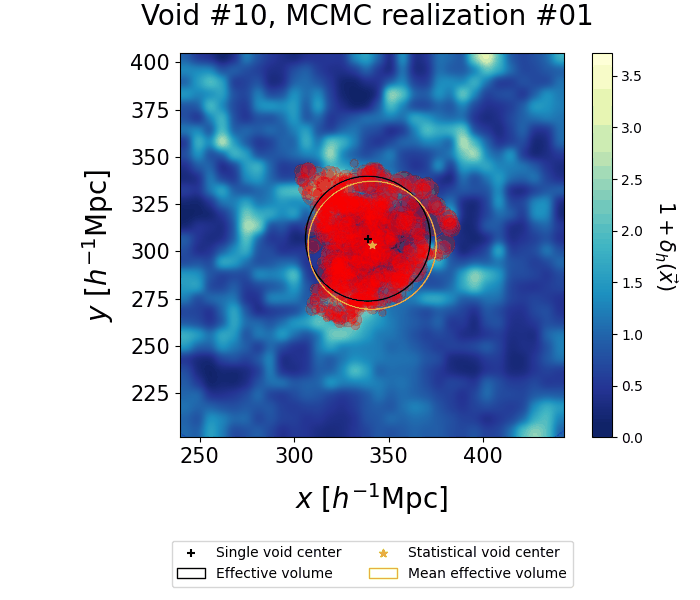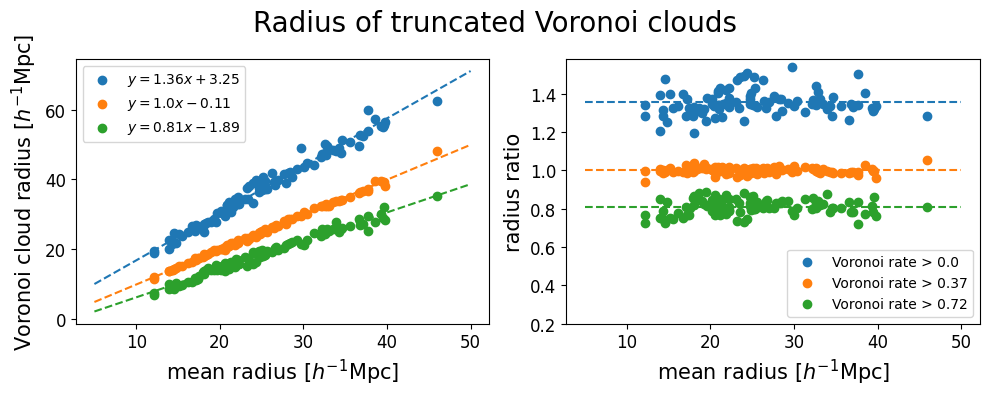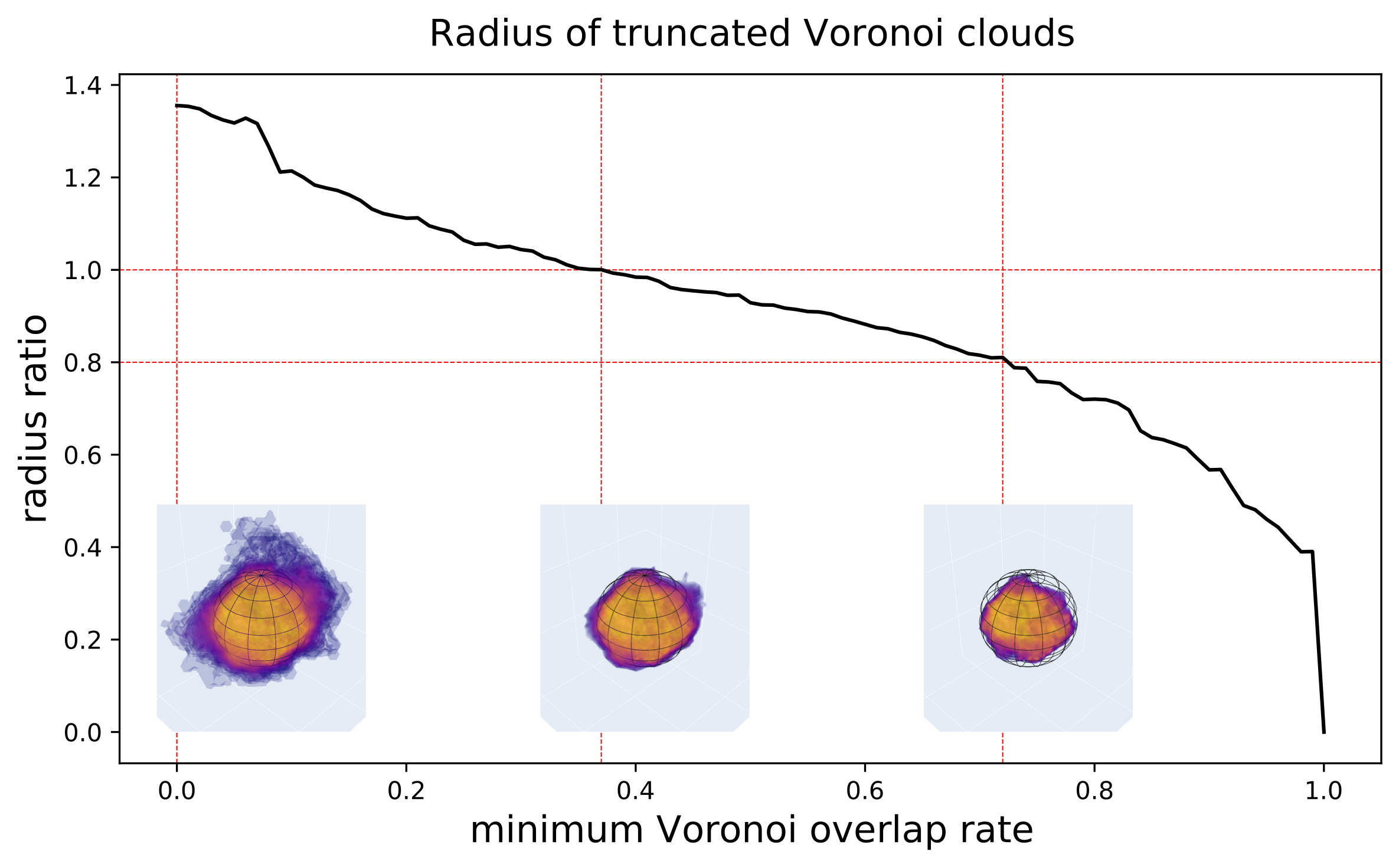Voronoi clouds
The VIDE void finder performs a Voronoi tessellation on the tracers of the density field and merges the resulting cells with a watershed transform. As a result, void morphologies are very complex. We show the individual contributions to a single statistical void: samples from different realizations are represented through circles corresponding to the Voronoi cells making an individual void, with the black cross and circle represent their mean centers and effective radii. The yellow star and circle represent the mean posterior of the center and radius, as inferred from our clustering procedure.

Full untruncated cloud
To characterize the shape of the void, we grid the space around the void center, and count how often a particular point is contained in a Voronoi cell. We define the Voronoi overlap rate, a quantity ranging from zero to one after appropriate normalization, which describes the environment around the void center. Higher values correspond to the most underdense parts of the void, while lower values define the boundaries. We show an interactive plot of this function - which we name Voronoi cloud - overimposed to the sphere of effective volume.
Truncated cloud
The volume of this cloud exceeds the statistical one, as the further outskirts are labeled as void only in few realizations, but are unlikely to be part of the void. Appropriate truncations of this cloud can yield the a volume that matches the mean posterior prediction, as shown below.
How to choose the truncation level?
Different thresholds of the Voronoi overlap rate $r_\text{Voro}$ will produce clouds of different sizes. We test three thresholds, corresponding to $r_\text{Voro} > 0.0; 0.37; 0.72$, and measure the resulting cloud volumes. We find that the relation with the mean statistical radius is overall linear. A threshold of $0.37$ preserves the mean posterior volume, while a deeper cut at $0.72$ probes the deeper interior of the void, at $\sim 80\%$ of the radius from the center.

We can probe all truncation levels between 0 and 1, and measure the resulting ratio between the volume of the truncated clouds and the mean volume obtained from the posterior distribution. The relation between this threshold and the fractional volume of the truncated Voronoi cloud provides an operational criterion to explore different density regions within the voids.
